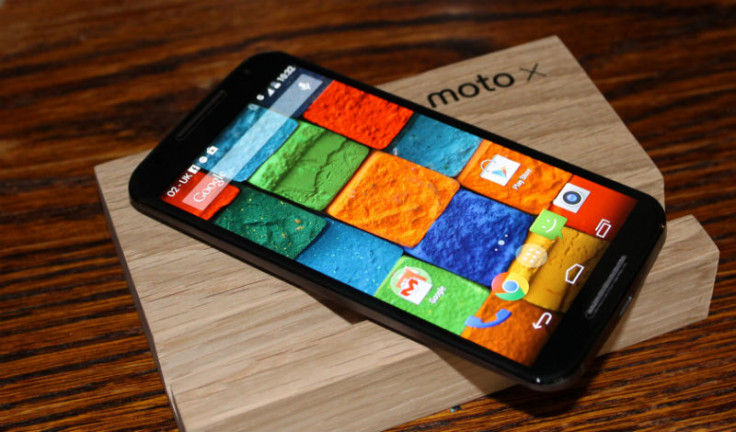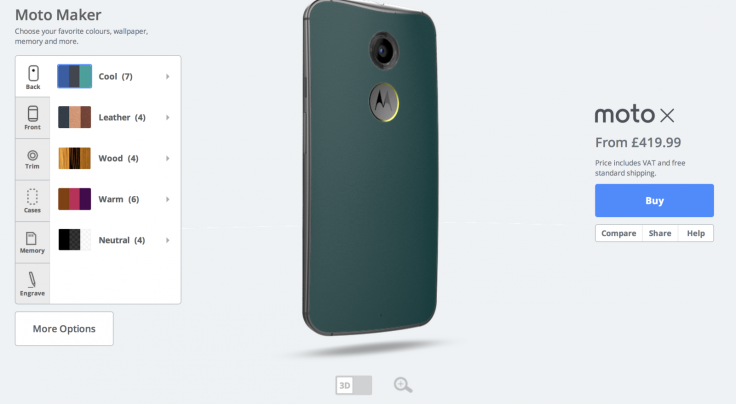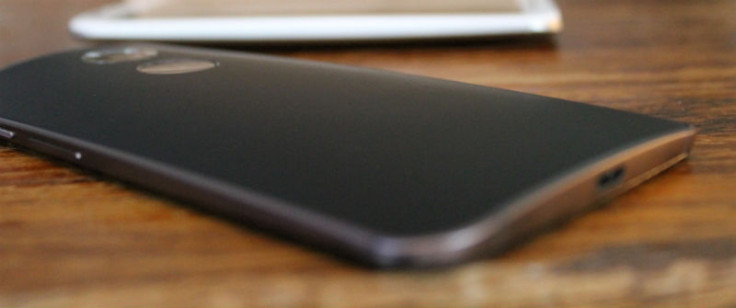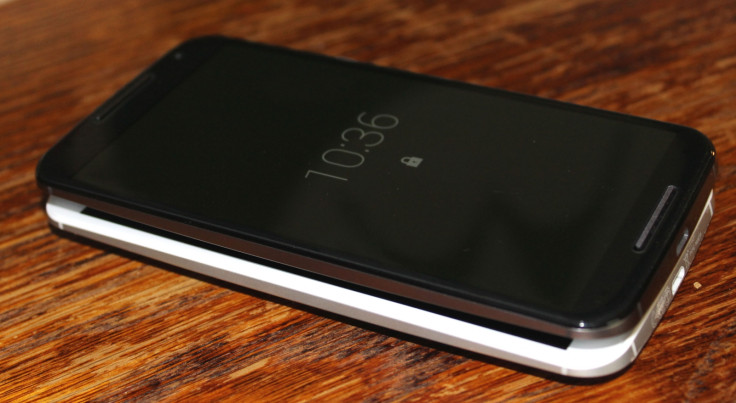Moto X (2014) Review - Stripped-Back Android But at a Price

Key Features
- 5.2in display (1920 x 1080)
- Android 4.4.4 (upgradeable to Android L)
- Touchless Control
- Moto Maker
- 2.5GHz Qualcomm Snapdragon 801
- 13 megapixel camera
- 2GB RAM/16GB storage
- Price as Reviewed: £420
Moto X (2014) Review
Motorola is about to become part of the Chinese behemoth Lenovo but we are unlikely to see the Moto branding disappear any time soon as it carries with it a strong brand recognition in markets Lenovo currently does not have a presence in.
Therefore the 2014 version of the Moto X - along with the new Moto G - are likely to be the last phones produced while the company is still technically owned by Google.
The original Moto X was hampered by uninspiring design, a slow processor and a high price, and while Motorola has addressed two of these issues, is that enough to make the Moto X a must buy?
Moto X (2014): Design
As we said, the design of the original Moto X was rather uninspiring but I'm glad to report that Motorola has clearly listened to feedback and has taken positive steps to address this.
The new Moto X is wider and taller than the original thanks to the bigger screen, but it is also thinner, tapering to just 3.8mm at its narrowest point.

Despite being significantly bigger, the phone is just 5g heavier at 144g and with the addition of an aluminium frame feels like a premium smartphone.
The Moto X is about the perfect size for me. Its slim profile and lightweight design mean it slips easily into all pockets and the overall design is minimal and attractive.
The one slight misstep is the raised speaker grilles at the top and bottom of the screen, which do provide decent sound but as they are raised slightly above the rest of the phone's front panel, they can catch on clothes at times.
Moto X (2014): Moto Maker
One of the big updates over the 2014 version of the Moto X in the UK, is that Motorola's Moto Maker design tool is now available.
Launched in the US alongside the original Moto X, Moto Maker allows you change the colour of the rear cover and trim of the phone as well as choosing between black or white for the front panels.
There are 17 different rear panel covers which can be paired with 10 different trim colours - which change the colour of the speaker grilles on the front and a circular ring around the Motorola symbol on the rear.

If you want to go a bit further, you can choose one of four wood or four leather back covers but these will add £20 to the cost of your phone.
Finally you also have the option of adding a name or shot message that will be engraved on the lower section of the rear cover - a service which is available for free.
While this is not a make-or-break feature, for those looking to create something unique, it is certainly a nice option.
Moto X (2014): Screen
Motorola has increased the size of the screen from 4.7in to 5.2in while boosting the resolution to Full HD (1920 x 1080) giving the new Moto X a pixel density of 423 pixels per inch, which is on a par with the likes of the Galaxy S5 and HTC One M8.

The screen looks beautiful, with rich colours and excellent viewing angles. The resolution ensures that everything is nice and sharp, making reading emails or web pages a pleasure.
The screen may have increased in size, but Motorola has done well to make sure it is still useable one-handed (just) and the way the screen almost wraps around to the edge makes swiping smooth.
Moto X (2014): Hardware
The Moto X is using Qualcomm's Snapdragon 801 chipset with a quad-core processor running at 2.5GHz and paired with 2GB RAM.

Meaningless numbers aside, what this means is that the new Moto X is able to handle the high resolution screen, 3D intensive games or HD video streaming. The original used a rather data chipset meaning it was not on par with other flagship smartphones on the market, but this is not the case this time around.
You get the option of 16GB or 32GB (£40 more) of storage but sadly there is no microSD card slot meaning if you fill up the built-in storage, you will have to turn to cloud storage like Dropbox or Google Drive.
In terms of connectivity you get the usual trio of Wi-Fi AC, Bluetooth 4 and support for all of the UK's 4G networks.
Battery life from the 2300mAh battery is, as Motorola claims, one day of average use. While this is nothing to write home about, Motorola has included support for its turbocharging technology which means that a 15 minute charge will give you eight hours of use - however to make use of this you will need to buy Motorola's own turbocharger (around £20).
Moto X (2014): Android, Voice Control and Gestures
Motorola promotes the fact it ships the Moto X with stock Android "free from unnecessary software skins" which is a veiled dig at the likes of Samsung's TouchWiz and HTC's Sense.
What you get is an (almost) untouched version of Android 4.4.4, with Motorola only adding a number of its own apps and features on top. The result is you get Android as Google intended and the result is a fast fluid and intuitive interface.
Almost more important that the pure Android experience however is that Motorola has explicitly said the Moto X will get the Android 5.0 update when it is launched.
So what about those unique features?
Well Motorola has built on the touchless control and gestures if launched with the original Moto X last year.
You can interact with your Moto X using just your voice as the phone is "always listening"/ Where previously this was done by saying the phone OK Google, you can now customise that phrase however you like.

There is also more integration with third party apps, such as Facebook and WhatsApp, allowing you to update posts using just your voice. You can still find out what the weather is like, make phone calls, get directions and send text messages.
The system works remarkably well, with voice recognition having improved significantly from last year. When voice control feature cannot carry out a request it defaults to Google's own search through Google Now, which is a good fallback position.
Also new for the 2014 version of the Moto X is gesture control. Using the built-in infrared sensor, you can now silence your alarm or reject a call by simply swiping your hand over the screen. I actually found myself using both of these during my testing, and both times the system worked without fault.
However that is it for gesture controls at the moment and Motorola says this isn't going to be opened up to third party developers for now - which is a pity.
Finally, the new Moto X continues to use the Active Display features, which allows you to see notifications and the time without having to unlock the phone. Flick your hand over the screen and the time and any notifications you have will appear.
These can be opened directly or dismissed, all without having to turn the screen on fully, which will save you some battery life.
If I had one complaint about Active Display it would be that it is too sensitive and actives too often.
Moto X (2014): Camera
The camera on the Moto X has been given a significant update, with a 13 megapixel sensor on the rear along with a dual flash and 4K video recording. There is also a slow motion video option which has been popularised by the iPhone.
But is it any good? Well, yes, it is. The results I got from the Moto X were great. The level of detail may not match the like of the Xperia Z3, but for most users the evenly lit, sharp and well-balanced images which the Moto X can take will be more than sufficient.
Just like the original, you can launch the camera app with a quick double twist of the phone, a system which never failed to work and in the absence of a physical shutter button to launch the camera, is the next best thing.
The camera software, just like the stripped-back version of Android, is free of clutter and straight-forward to use. The one added feature is "control focus and exposure" which allows you to lock in the lighting or focus on a specific object within the frame.
The front-facing camera has also received a bump featuring a 2 megapixel sensor and 1080p video recording.
Moto X (2014): Value and Verdict
At £420, the Moto X is not cheap. Yet it is not quite as expensive as the flagship models from the likes of Apple, Samsung, HTC or Sony.
It therefore occupies an odd middle ground where Motorola is hoping that its beefed-up specs, better screen and premium design will entice those looking for a top-end phone to consider the Moto X.
The problem is, that if Motorola had kept the price below £400 it would have a better chance of doing this, but at £420 for a 16GB version of the Moto X, it is losing the value appeal of last year's model.
That said, the unique touchless control, gestures and active display all offer something which other phones do not and while they are still in their infancy, they can be useful in real world situations.
Scores
- Screen: 9/10 - Big and bright
- Camera: 8/10 - Good enough for most situations, but not among the best on offer
- Software: 10/10 – Stock Android with genuinely useful additions
- Design: 9/10 – A big upgrade on last year. The curved back feels great and Moto Maker great for those looking for something different
- Build Quality: 9/10 - Solid and robust
- Overall: 9/10 – An excellent phone with great screen, but priced slightly too high.
The Good:
- Great screen
- Innovative and useful touchless and voice features
- Stock Android with update to Android 5.0 confirmed
- Great design
The Bad:
- No microSD
- £40 more expensive than last year
© Copyright IBTimes 2025. All rights reserved.






















